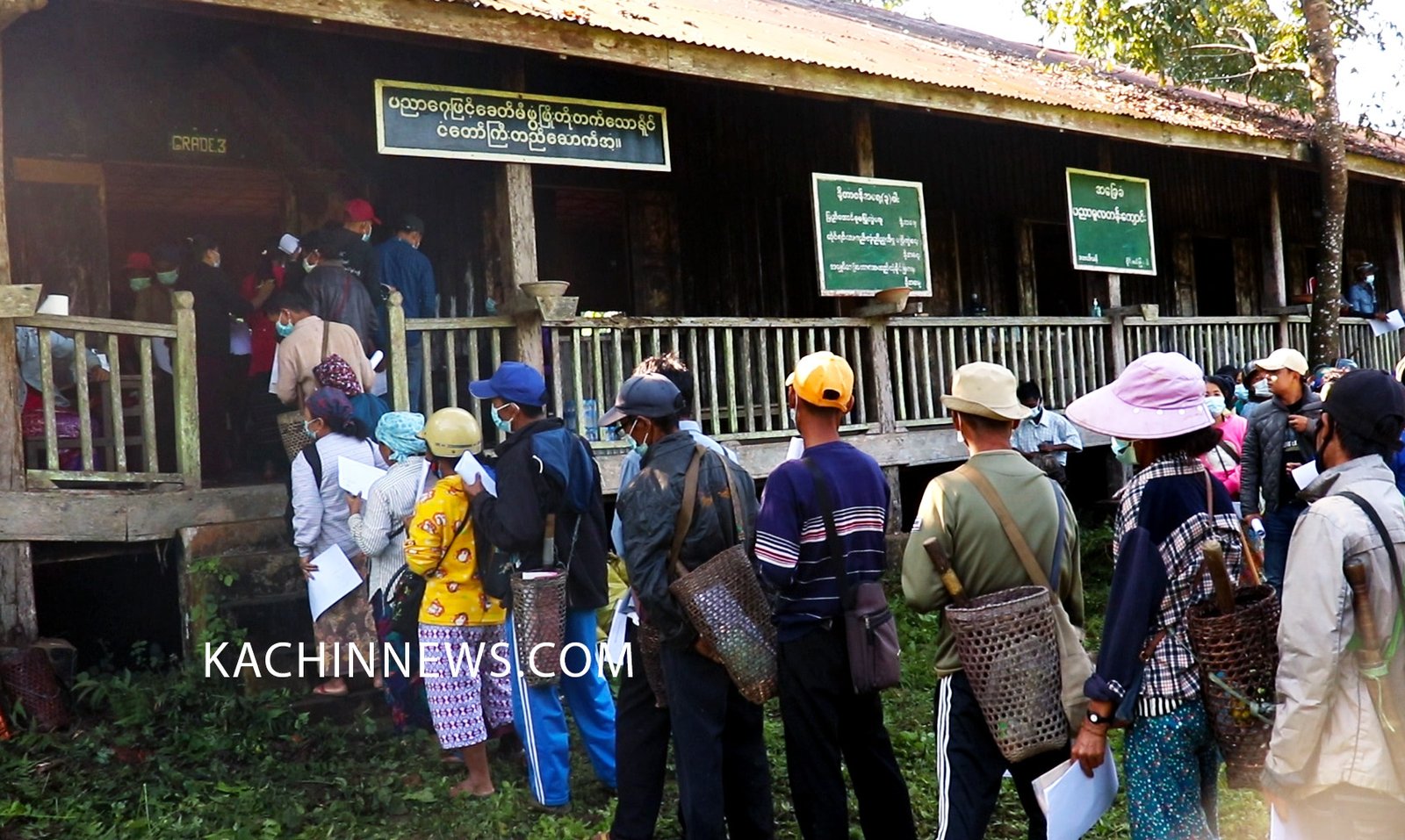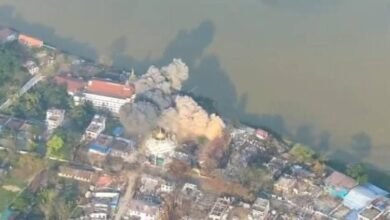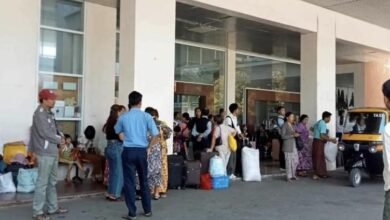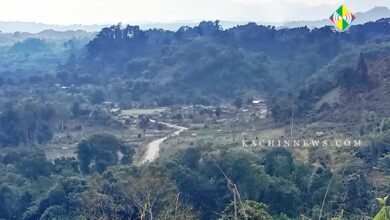Govt and Kachin CSOs Offer Different Support for Returning IDPs

No straight road lies ahead for hundreds of thousands of displaced Kachin who want to return home after being uprooted by conflict between armed groups nearly a decade ago. While the government is committed to rebuilding destroyed villages in areas controlled by the state, the Kachin civil society organizations (CSOs) will return internally displaced persons (IDPs) to villages administered by the Kachin Independence Organization/Army (KIO/A) or the government, but not both.
The Kachin Humanitarian Concern Committee (KHCC), a coalition of Kachin religious groups and CSOs, has 4 million kyat ($3,000) to rebuild homes in about 30 villages. The government will shell out 7 million kyat ($5,000) for 200 new houses in three villages.
KHCC Chairperson Rev Dr. Hkalam Samson said the IDPs are upset because they’re receiving different support by the government and Kachin CSOs.
KHCC established a preliminary list of 17 villages for repatriating the civilians. Plans for returning IDPs to an additional 13 villages will be evaluated at a later date.
An exception is Da Bak village, which is administered by both the government and KIO/A. KHCC is working closely with the government and Burma Army to return hundreds of IDPs by this March. Most of the homes are being rebuilt. The same goes for Gara Yang and Kazu, although no timeline has been established for repatriating civilians to these villages.
The Kachin Independence Organization/Army (KIO/A) supports KHCC’s preliminary list, but hasn’t said much about plans to return civilians to Da Bak or Nam San Yang, where IDPs returned in 2019.
While KHCC is encouraging civilians to return home only if they’re ready, CSOs say the government is pressuring them to return prematurely by cutting financial support. Some believe this is what led villagers to voluntarily return to Nam San Yang last year without any assistance.
Hkawn Ja, coordinator of Kachin Peace Network, said: “If we tell them not to return, we have to take responsibility for them. If we tell them to return home, we need to help them.”
For the IDPs, there’s many concerns weighing heavy on their minds. With no ceasefire in place, they’re afraid fighting between the Burma Army and KIO/A will resume after they return. They worry about the many landmines that lay hidden around fallow farmlands surrounding their villages.
Although the Burma Army removed mines from inside some villages, soldiers didn’t clear them from the surrounding areas, including around the roads and footpaths leading to their villages. Civilians are nervous about returning to locations where the Burma Army is based fearing human rights violations will continue. Additionally, they doubt the quality of housing that is being built for them.
Nan Pu, from Htoi Gender Foundation, told KNG the government must guarantee the security of the IDPs before the repatriation process starts. And once they return, they must help them until they can provide for themselves, including by providing health and education.
Since preparations started at the end of 2018, none of the Kachin political parties released statements about the repatriation process..
Nearly 100,000 civilians remain in the IDP camps, which were established after the Burma Army started fighting with the KIO/A on June 9, 2011, ending a seventeen year ceasefire.




